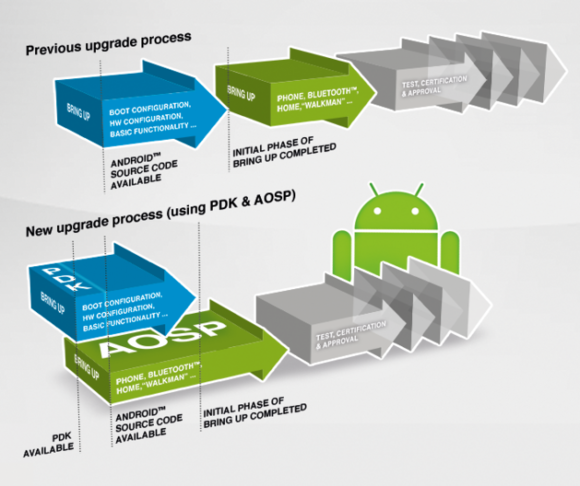Now that Google has released Android 4.3, so begins the agonizing process of figuring out which phones and tablets will get the upgrade, and when. Not surprisingly, most Android phone makers are being cagey about their upgrade plans.
In response to a TechHive inquiry, a Samsung spokesperson told us that no plans have been announced at this time.
Meanwhile, a HTC spokesperson said "Now that Google has unveiled an update to Jelly Bean, Android 4.3, we'll work to determine how this may impact our global and region specific upgrade plans."
Motorola hasn't said anything about its upgrade plans yet, which is surprising given that the company is owned by Google. Earlier this week, the company announced atrio of new Droid phones, all running Android 4.2.
We've reached out to Motorola for additional comment, and will update if we hear anything back.
Sony commits early
Sony's approach is a breath of fresh air compared to other major phone makers. The company has already confirmed that Android 4.3 will be coming to the Xperia Z, Xperia ZL, Xperia ZR, Xperia SP, Xperia Z Ultra and Xperia Tablet Z, though no specific timeline was given. Sony is also considering additional upgrades directly to Android 4.3 for some devices that are currently on Android 4.1.
Even better, Sony has pulled back the curtain on how the upgrade process works. In ablog post, the company explains in detail how hardware, software and testing all factor in, and discusses what parts of the process have improved over the years.
It's often assumed that the major bottlenecks in the upgrade process are due to software customizations that carriers and phone makers add on top of stock Android. But as Sony's blog post explains, hardware is also a major piece of the puzzle, because phone makers need to spend time making sure all the components of their handsets work properly with Google's software.
Fortunately, getting the hardware to a stable state with new versions of Android is a smoother process than it used to be. Sony says it collaborates more closely with Qualcomm and with Google, whose Platform Development Kit gives select phone makers a head start on upgrading their hardware.
Testing and approval is still the biggest bottleneck, according to Sony. Phone makers need to make sure their upgrades comply with standards like Bluetooth, don't infringe on other companies' intellectual property and run smoothly without disastrous bugs. “[I]t is not the Bring up phase, but the Test, certification and approval phase that is the most time consuming process when it comes to getting a new software release out on our phones,” Fredrik Ekstrand, Sony Mobile's head of software product management, said in the blog post.
A minor upgrade, at least
If it's any consolation, Android 4.3 isn't a major upgrade, and many of Android 4.3's features are already available on state-of-the-art phones like the HTC One and Samsung Galaxy S4. Those phones, for instance, already support OpenGL ES 3.0 and Bluetooth Low Energy. The fact that Android 4.3 now supports these features just means they'll come standard in many more phones to come.
The biggest Android 4.3 feature that users might want is Restricted Profiles, which will allow parents to create kid-friendly user profiles on their phones or tablets. But considering that many phones—including the HTC One—are still stuck on Android 4.1, any sort of upgrade at this point would be welcome. Like always, all we can do is wait.
Updated to include HTC's statement.











0 comments:
Post a Comment